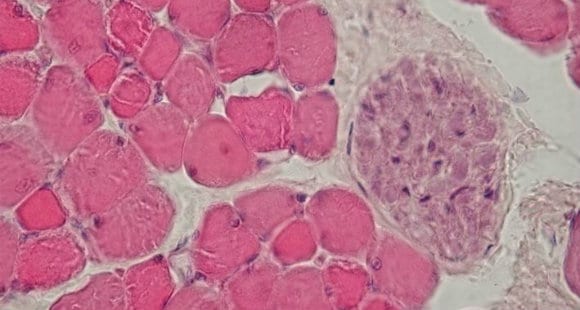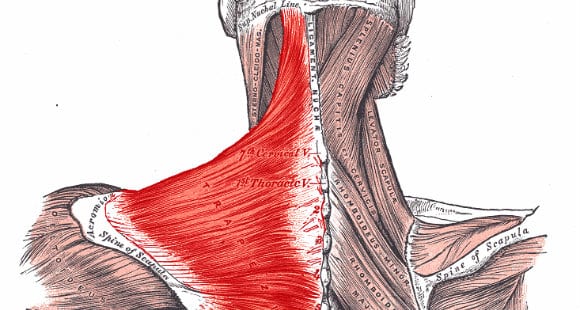By the healthiergang writer , personal trainer.
Muscle Fiber
Muscle fiber is the unit of skeletal muscle. The peculiar characteristic of skeletal muscle tissue is the ability to contract, thus generating the movement of the formations to which it is linked.
The elements that constitute it are long cylinders from 1 mm to 20 cm with a diameter between 10 and 100 µm, the muscle fibers.
General notes
They are functional syncytiums, derived from the fusion of multiple cellular components and for this reason they are defined as polynucleated (multiple nuclei positioned under the plasma membrane called sarcolemma).
Each muscle fiber is covered by a layer of loose connective tissue (majority of collagen fibers) called endomysium, more fibers are collected forming a bundle also wrapped in connective tissue called perimysium. Finally, the entire muscle is surrounded by an external connective tissue called the epimysium.
The cylinder that constitutes each fiber can be divided into small functional units (smaller portion of fiber capable of carrying out the function of muscle contraction) called sarcomeres.
Categories
Not all muscle fibers are the same but they differ both chemically and functionally (not related to contraction, they all contract, but come into play at different times and produce work through different processes).
We have 2 major categories and a third intermediate ...
1. Slow-shaking muscle fiber
(ST, slow-twich) or type I. This type of fiber belonging to skeletal muscle is mainly involved during aerobic activities.
To perform their functions in the best possible way, they require a high quantity of mitochondria (larger than normal) and a high content of oxidative enzymes as well as an evolved capillary network to ensure a greater distribution of O2, essential in aerobic metabolism.
The characteristic red color is due to the amount of myoglobin present (a protein responsible for binding oxygen and iron).

These fibers, being predisposed to oxidative metabolism, draw energy from the oxidative phosphorylation process using glucose (glucose) and lipid (triglycerides / fatty acids) substrates in the same way. The latter are present in greater quantities at the intramuscular level than glycogen (in this type of fiber).
Within the TS, glucose transport by GLUT-4 is greater, resulting in a more developed insulin sensitivity in athletes in which their% is greater (a typical characteristic of cross-country athletes).
Since there are fewer enzymes in these cells used for the hydrolysis of ATP, its cleavage occurs more slowly.
This is associated with the fact that these fibers are connected to alpha motor neurons (nerve cells responsible for sending nerve impulses to muscle fibers) of the tonic type and which consequently have a slow and low-frequency response to nerve stimuli. It also allows him to contract at low intensity but for a longer time.
The red fibers therefore show a great tolerance to fatigue, an ability to remain in contraction for a long time and therefore intervene in endurance activity characterized by intense and protracted efforts (eg lost in the hall: training with high repetitions and low recovery).
Their distribution is greater in the postural muscles such as the spinal muscles, or in the muscles that naturally perform slow and repetitive movements.
2. Fast-shaking muscle fiber
(FT, fast-twich) or type IIb. This fiber due to the low presence of myoglobin and mitochondria takes on a whitish color and consequently is also called white fiber.
Unlike red fibers, they have a scarce presence of capillaries and mainly use the anaerobic metabolic process (lactacid and alactacid) of glycolysis.
Therefore, by not exploiting oxygen like the red ones, the restoration of energy reserves can only take place during recovery.
The greater speed of contraction, which gives its name to this type of cells, is mainly due to 2 factors:
- high presence of the enzyme myosin ATPase, thanks to which they are able to hydrolyze ATP much more quickly.
- Nervous connection with alpha motor neurons of the phasic type, capable of transmitting nerve impulses at high speed causing an equally fast contraction of the fibers that innervate. In fact, they reach a significantly faster voltage peak, in 40 ms, compared to the 80-100 ms of the red fiber. Although they have a rapid response to the nerve stimulus, they have a limited resistance which leads to great fatigue.
 Other differences from red fibers are a greater diameter and their grouping in smaller numbers within the motor units.
Other differences from red fibers are a greater diameter and their grouping in smaller numbers within the motor units.
The FTs are equipped with greater power, and therefore suitable for intense and short-term efforts that require a great neuromuscular effort (low repetitions with high recoveries). They are recruited in the disciplines of speed (eg 100m) and power (eg powelifting and weight lifting), or team games that require short and intense efforts (eg basketball).
They are endowed with greater reserves of glycogen than the red fibers but despite this some studies have revealed that the transport of glucose by GLUT-4 within the white fibers is less than that found in the TS although it is still provided with greater ability to store it in glycogen.
These characteristics make the white fibers suitable for anaerobic efforts, exploiting the anaerobic alactacid and anaerobic lactacid mechanisms.
3. Type IIa muscle fiber
They take on intermediate characteristics between type I (red) and type IIb (white) fibers. These fibers, like the STs, are characterized by a red color but unlike these they are able to hydrolyze ATP as quickly as the IIb fibers. Moreover, thanks to an abundant presence of the enzyme myosin ATP-asi, they are endowed with a greater oxidative capacity than the whites.
They therefore have a good aerobic and anaerobic capacity thanks to the high content of both glycolytic and oxidative enzymes.
Since their characteristics are somewhere in between, these fibers are able to adapt to training stimuli. Furthermore, they come into play during both power and endurance training.
Our articles should be used for informational and educational purposes only and are not intended to be taken as medical advice. If you are concerned, consult a health professional before taking dietary supplements or making major changes to your diet.


























